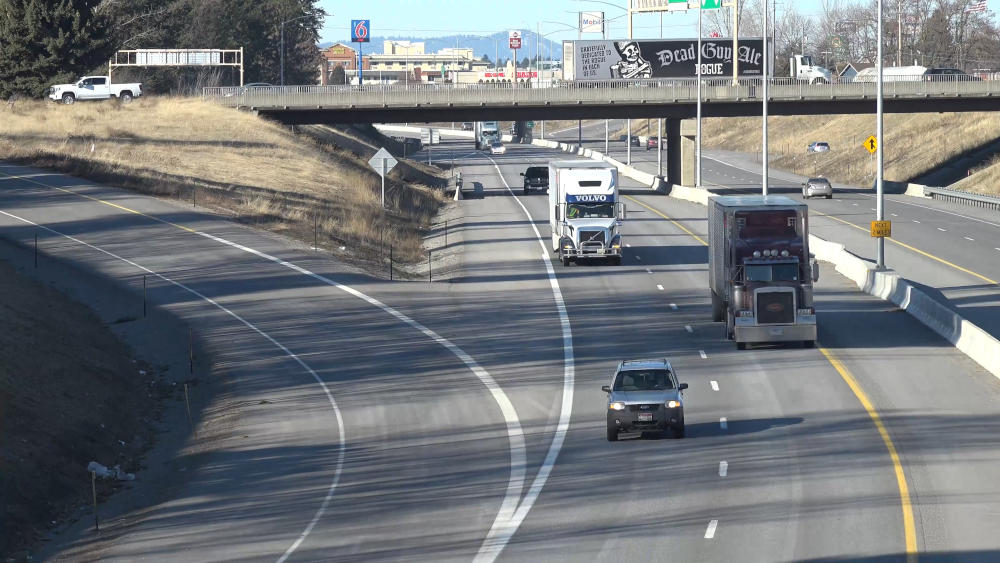Summary:
Two crashes involving cars and semi-trucks. In both instances vehicles were making lane changes. In the first crash, the mini-van changed lanes into the semi-truck. In the second crash, the semi-truck changed lanes into the car. What can we learn from these crashes? Learn the strategies and skills that both the motorist and the truck driver could employ to avoid these events in future.

Rick August, PhD
Working as as Expert Witness, Dr. August provides testimony in crash analysis, traffic safety, road user behavior, and driver education. His expertise is in commercial vehicles (trucks & buses), duty of care, and air brakes.
#1) Car Crashes Into Semi-Truck
Two crashes involving semi-trucks on freeways with cars. And in both instances, the vehicles are making lane changes. What can we learn from these crashes and what strategies can we put in place that will prevent these crashes in future? In the first situation, the minivan passes the semi-truck. They are within close proximity of an off-ramp and it is assumed that the driver of the minivan is going for the off-ramp when they’re making the lane change.
However, upon closer examination of the crash, you can see that the truck driver honks as soon as the minivan starts to move to the right. In an attempt to try and avoid the crash with the minivan, the truck driver too moves to the right, but does not slow down.
The truck driver honks. In response to the honk, the minivan driver does not abort the lane change as most drivers would. So what could the driver do to prevent this crash in the future? First and foremost, there are convex mirrors on the fenders, which are called bus mirrors, and these allow the truck driver to see all the way down the side of the truck. An attentive driver would have seen the minivan passing.
Freeway Interchanges ARE Intersections
As well, there are continuity lines on the right indicating an off-ramp and the deceleration lane, indicating that there is an intersection on the freeway. On-ramps and off-ramps are intersections of the freeway. Most of the time, these are signposted by overpasses. You can see the continuity lines, which are lines that are half as long and twice as wide as regular dividing lines indicating the off-ramp.
Honking is NOT Your Best Defense To Avoid Semi-Truck Crashes
Now, the driver did honk in this situation to avoid the crash with the car. However, as I say, defensively speaking, when you’re in an emergency situation, if you have time to honk, you have time to do something else that is going to be a better response to what is going on. And in this situation, had the driver got on the brakes, had the driver got out of the cruise control and slowed down, he or she may have avoided the crash. Because you can see that the front of the truck is approximately 2/3 down the van before the two vehicles make contact.
So pay attention to what’s going on, watching other traffic that’s passing and take note of where you are on the freeway. If you are within close proximity to the off-ramp, there’s a possibility that the vehicle could try and move across in front of you to make that off-ramp.
Medical Emergency Is a Possibility
However, it’s unlikely that that’s what the driver was doing because the truck driver honked the horn, but the driver of the minivan did not abort the lane change, which is usually what happens as soon as you’re making a lane change, you didn’t shoulder check, and you hear a sound, you’re like, “Oh my God, what happened?” And then you pull back into your lane and then recheck when somebody else honks the horn.
Because the driver of the minivan didn’t react to the truck driver honking the horn, there is a possibility that there was a medical emergency. The driver had a heart attack or fainted or some other condition that may have caused them to drift into the other lane and not abort when the truck driver sounded the warning.
But the truck driver should have been attentive to where he was on the interstate, where he or she was on the interstate, and should have been braking and getting out of the throttle and they may have avoided the crash. So be attentive of where you are on the interstate, on-ramps and off-ramps.
Because the driver of the minivan didn’t react to the truck driver honking the horn, there is a possibility that there was a medical emergency.
#2) Semi-Truck Crashes Into Car
In the second crash, the truck driver makes a lane change across into the other lane of traffic and strikes the car that’s trying to pass on the right side of the semi-truck. So for cars, once you see that big truck moving into your lane, get on the brakes and get in behind the big truck.
As well, you can see that the three trucks are close together, there’s a cluster, and you want to stay out of those clusters to keep yourself safe.
Defensive Lane Changes
As a truck driver, a defensive posture when making lane changes is signal on, minimum three flashes on the signal, move to the side of the lane to which you’re going to change lanes, not out of your lane, but right to the edge of the lane. Pause, check again, and again, this truck has bus mirrors on it, so you can see all the way down the side of the truck.
An attentive driver would have seen the car there in that other lane and prevented the collision with the car and the rollover because the semi-truck ends up on its side on the freeway.
Shoulder Check When Making Lane Changes
So defensive lane changing, minimum three flashes, check, check again, shoulder check down in that little window on the passenger side of the semi-truck, look in your convex mirrors, move to the right of your lane, pause before moving out of your lane, check again, and then move over. And remember, pick the best answer, not necessarily the right answer. Have a great day, bye now.

